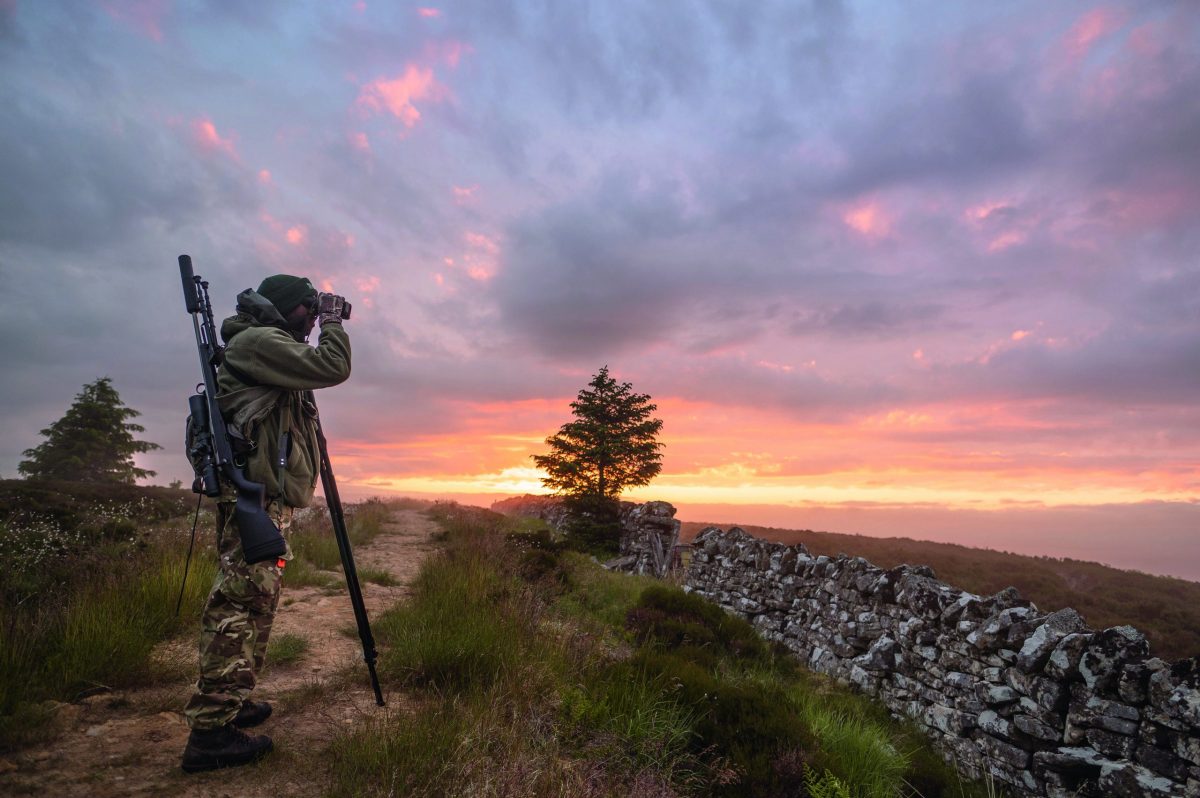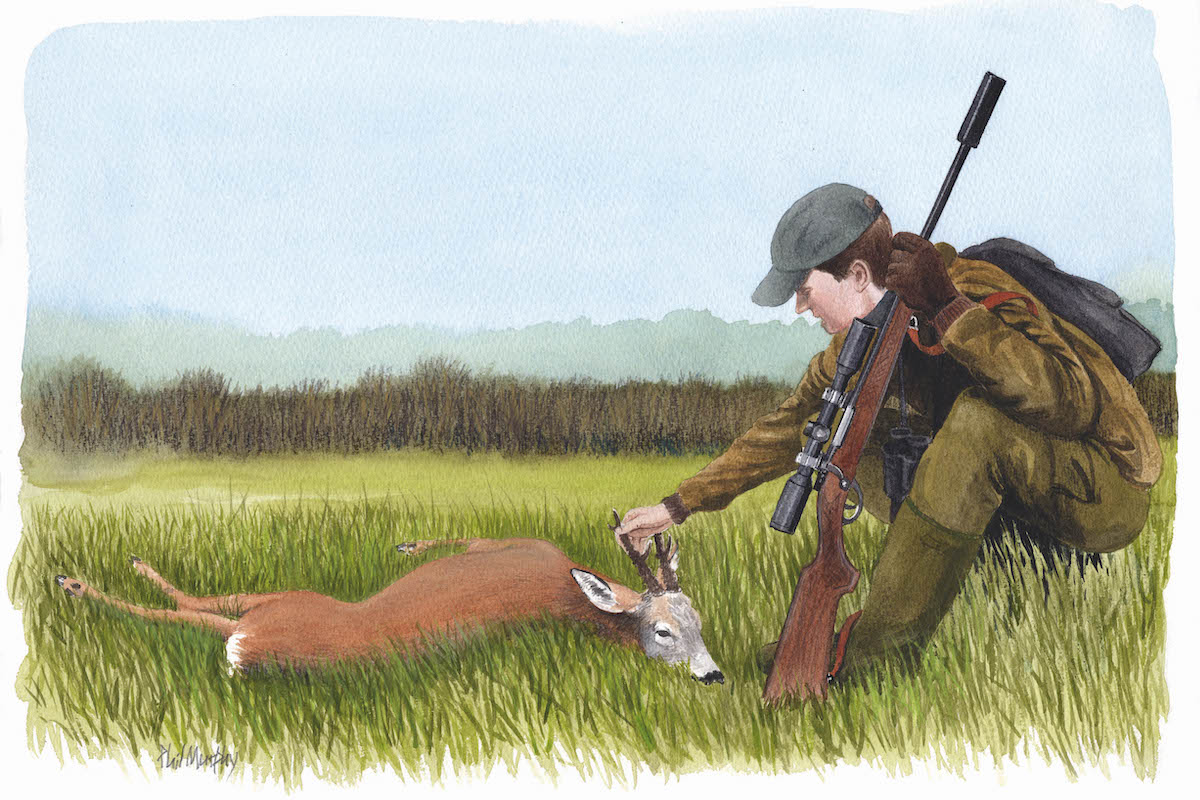Deerstalking – do you learn best alone or with a guide?
Do you learn more from deerstalking by yourself or going out for deer with a pro? Will Pocklington searches for some enlightened answers

Somewhere between the last mouthful of breakfast and the second spent round of the day, I began pondering quite how much stalking differs when in the company of a guide. I was enjoying my annual trip to stalk fallow with a friend in South Lincolnshire, one of the few times this year I’ve tailed another person in pursuit of deer rather than go it alone. It had me thinking — how can we get the most from deerstalking?
Deerstalking a series of decisions; the dynamic changes when you’re not the one making them. For many of us, the appeal of stalking as a solitary activity is tied to the sense of escapism. We become engrossed in predicting the movements of deer in various circumstances. We think about the wind, recent weather patterns, and other activities on the ground in question that influence our quarry’s behaviour; the ‘hunt’ begins long before the weight of a rifle hangs from our shoulders. We plot a route. We see other wildlife. There’s no distraction. All in all, it is utterly absorbing.
It is arguably more difficult to find that level of fulfilment if we are simply trailing a guide and taking a shot. I’ve often thought the same about sitting in a pigeon hide someone else has sited, amid decoys someone else has placed, shooting birds someone else has been watching for the past week. If you’re not heavily involved in the process, is the satisfaction and sense of achievement not diluted or removed completely?
Gaining experience
Ben Dorrington is a commercial pilot from North Yorkshire who guides clients in his spare time. He’s also a BASC-accredited deerstalking certificate assessor and instructor. “When you’re deerstalking with a guide,” he says, “you don’t necessarily have to rely on your own skills or knowledge base to secure success, as a large part of the guide’s job is to put you in the right place at the right time. But there’s still a lot you can do to increase the likelihood of success and gain the most from your experience. You might have been stalking on your own for many years. That doesn’t mean you’re doing things the best or most effective way.”
Going out and making your own mistakes is important, Ben thinks. But for deerstalking to stand up on its own two feet and be seen as a credible, vital activity that recreational stalkers can be actively involved in, we need to ensure the development of responsible, well-trained advocates who see deerstalking as more than just a Saturday afternoon wander. “Guided stalks are a key part of that,” he says.
New species, terrain and guides present opportunities to see how people do things differently — their pace of stalking, how they use the wind and sun, their dogs, their use of calls, how they extract an animal and go about sorting the gralloch. Every time I’ve accompanied a guide — whether that’s been in Lincolnshire, Scotland, South Africa or Spain — I’ve picked up something new and useful. The nature of the hunt may differ, but so often the nuggets of wisdom acquired can be put to good use on home turf. Perhaps I wouldn’t feel the same had my tack differed.
Ben is quick to point out that you can only really get the most from a guided stalk if you’re observant and ask the right questions. “The questions you ask and the things you learn will obviously depend on your experience level,” he says.
It’s a sentiment shared by professional deer manager Chris Rogers, who guides hundreds of clients a year on the Euston Estate in Suffolk. “It’s best to approach a guided stalk with an open mind and a willingness to learn,” he says. “We can all learn something from others.”

Guided stalks often give the opportunity to see new species of deer and different terrain
And that’s true even for the likes of Ben and Chris, both of whom make an effort to approach any busman’s holiday — where they find themselves as clients — with preconceptions about how they might do something left to one side.
“I always like to think I’m respectful to the guide taking me out,” says Chris. “And I tend not to say what I do for a job, as this puts extra pressure on both of us.” Ben concurs: “Everything I would want from a client, I try to be that. It’s a time to leave your ego at the door, regardless of what you’ve done before. Stick, search, report — stay close behind, be quiet, use your binoculars and be obedient, basically,” he laughs. “It’s good to see it from the other side sometimes as well — going back to being a student is valuable from a training point of view.”
Preparing your kit
To boost the chances of success on a guided outing, Ben ranks competence with one’s kit very highly, alluding to the common temptation to spend more time buying new gear than practising with it. “Setting up your sticks on a bracken-clad bank with a deer looking at you, about to melt away into cover, is a world away from getting comfortable on the flat, mown grass of a game fair demo aisle,” he says. “And little things like having your scope caps closed on a dry day, or winding your scope magnification too high, can make all the difference in situations where every second counts. Skill and luck both play their part when stalking — but I’ve no doubt they’re related.”
Martin Edwards is BASC’s head of deer management, and oversees the association’s popular stalking schemes. The schemes — in Hampshire, Arran (Scotland) and Baronscourt (Northern Ireland) — have been developed to provide a variety of different stalking opportunities for BASC members who wish to take up stalking or gain further practical experience and increase their knowledge.
Establishing a person’s level of experience and what they want to take from the stalk at the outset is key in Martin’s book, as is building rapport and putting them at ease. “The role of the guide shouldn’t be overlooked,” he says. “Our guides on the BASC stalking schemes are all trained to a high level, and have many years of on-the-ground know-how at their disposal. Between them, they take out more than 250 members a year, and find themselves offering advice and instruction on all sorts, from shooting positions and shot placement to extraction and lymph node inspection.”
Ultimately, we need to make an effort to yield the positives of joining a guide. And there are, of course, many — not least the access to an activity many don’t have the time, resources or ground to enjoy on anything more than an occasional basis. Besides, the memory of a trip with another person in a new area keeps its edges well as the months and years wear on. And the lessons we learn along the way will last a lifetime.

It’s important to leave ego at the door when being guided by another person








